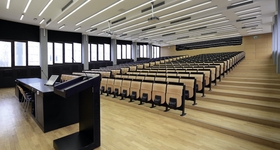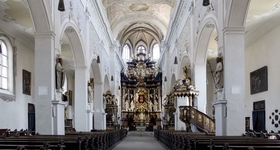There are, of course, recurring patterns, but also a lot of variables. For those who say that churches are always the same, I would like to point out two things. On the one hand, there is a big difference in how high the ceiling is, how many people usually come to the events and how wide the church is – there is no standard, not even in churches. On the other hand, in addition to mosques and synagogues, free churches are on the increase. This means that buildings in which religion is practised can be anything; an old clubhouse or a disused warehouse. There is often music from a band. This will require the planning of a high-quality PA system, or we may even be in the range of low-impedance speakers – I would be pleased to talk to you about that.





